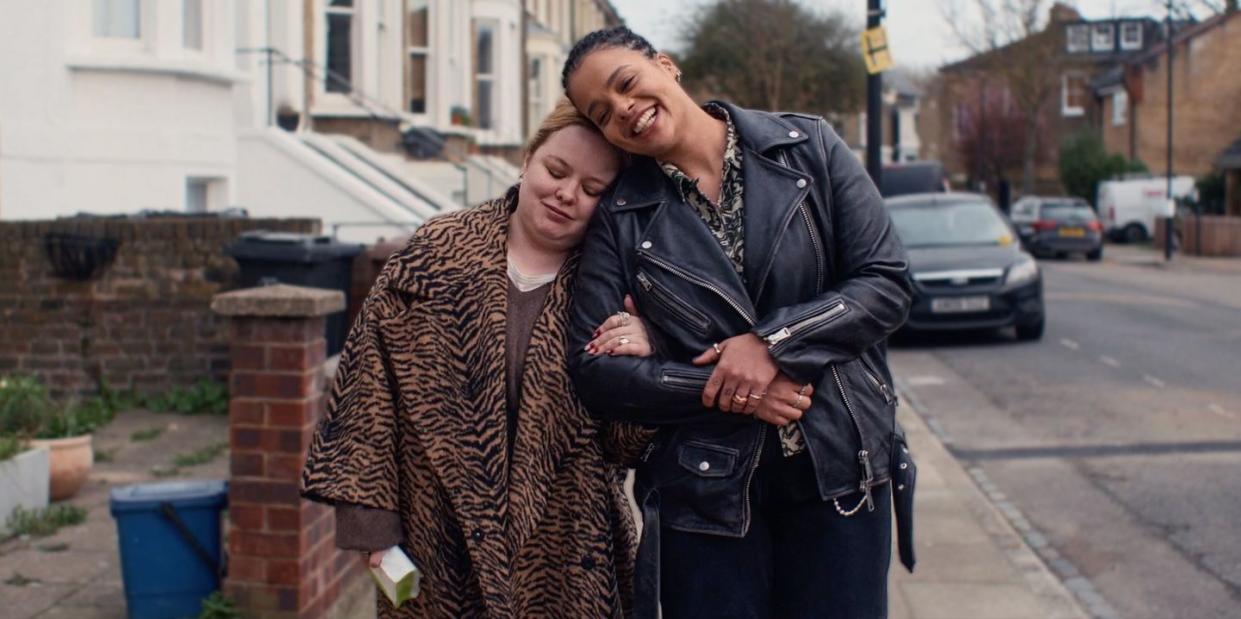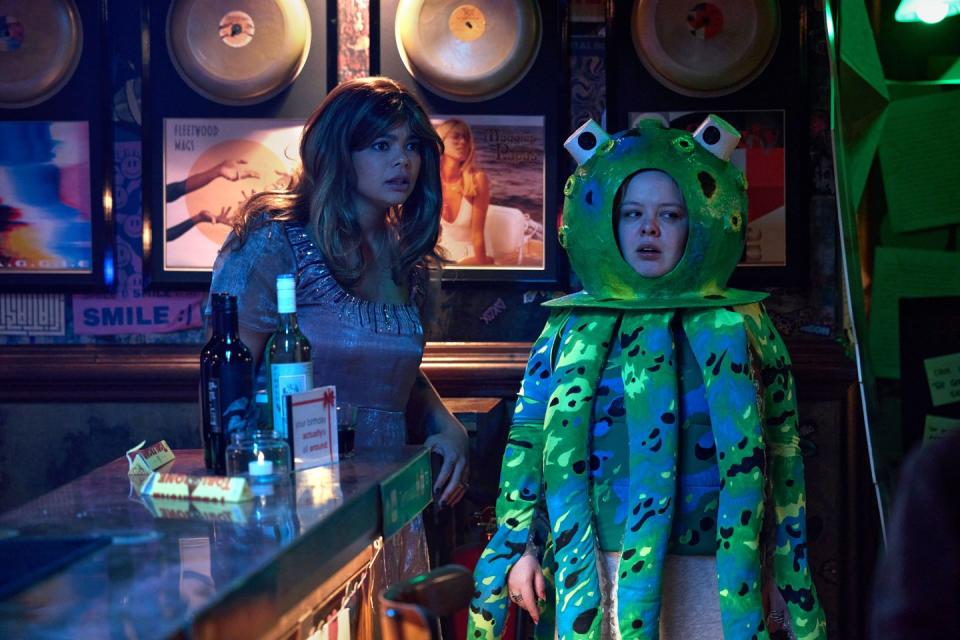This is what it’s like to be bipolar in 2024

Nearly four years ago, I wrote a piece for Harper’s Bazaar on bipolar disorder. One half of a very high-profile celebrity couple had spoken out about the impact that the condition had on their family, and I felt compelled to address it. I welcomed the spotlight on the illness from Kim Kardashian. After all, a message that reaches more than 360 million followers on Instagram makes for a pretty effective awareness campaign. However, I felt frustrated that we only seemed to hear about mood disorders when a big name shared their story – despite the condition affecting millions who don’t have the luxury of A-List access to healthcare.
The charity Bipolar UK estimates that more than one million people in the UK live with the mood disorder; five million more friends and family are affected by the illness. It’s a condition characterised by changes in mood and energy, which can be extreme. As Bipolar UK puts it, changes that “go far beyond most people’s experiences of feeling a bit down or happy”.

For me, this meant episodes of depression so deep that I would become convinced I wasn’t made for this world; blanched of everything that made me, me. Then months of hypomania, where I felt the brightest, sparkiest version of myself, my brain buzzing with ideas and able to get by on very little sleep. I was also irritable and argumentative during this time, with a tendency to make some poor life decisions (excessive spending, for one).
It took me more than four years to get diagnosed, despite repeatedly seeing the same psychiatrist and psychologist. Mine was a very common problem: I would go to the psychiatrist when I was low, so would be prescribed antidepressants, which can make bipolar symptoms worse. When I was high, I thought I felt great, so didn’t make regular appointments. It was only when I changed psychiatrists and was asked more about my experiences over the years that the diagnosis was made and I was put on the mood stabiliser, Lamotrigine. It’s a medication I’ll likely be on for life, and I will never miss my three-month check-ins with my psychiatrist.
I am one of the lucky ones. The average time for a bipolar diagnosis from first seeking help for symptoms is nearly 10 years, which feels shockingly long. Bar my initial visit to the GP, who made a referral to a psychiatrist, my treatment has all been private, which I'm aware is ridiculously fortunate. The vast majority of patients will not get to see the same people each time they seek help. In an over-stretched system with moods going untracked, the risk of misdiagnosis is high.
When bipolar goes untreated, symptoms can be devastating. A 2021 study by the Bipolar Commission, set up by Bipolar UK, found that two-thirds of sufferers had lost a job and were twice as likely to be divorced, while 15 per cent had lost their home. A third had attempted suicide in the period they were undiagnosed.
Despite the bleak picture, we have come a long way in the last four years, in huge part thanks to Bipolar UK’s world-leading research. Last month, the charity and the Royal College of Psychiatrists made a joint statement calling on the government to reduce the average delay to diagnosis down to five years, within five years. They’ve outlined the need for bipolar to be taken as seriously as other severe mental-health conditions, with its own dedicated treatment plan in the NHS (schizophrenia has one, for example, despite having half the number of sufferers as bipolar), meaning that patients could see the same clinicians over time. They also called for courses to help people manage their symptoms day-to-day, which is key to staying well. I wish I’d taken sleep more seriously years ago, for example. It took a global pandemic and life slowing down for me to see the benefit of getting enough. My sweet spot is seven hours and is something I’m now unwilling to compromise on.
The targets are high and, in this election year, will rely on cross-party government support. There are glimmers of hope: Angela Raynor, the current shadow health secretary has a family member with the condition and has called for raised awareness to help reduce the stigma. But let’s face it, a handful of MPs can’t solve an entrenched problem.
I’m proud to support World Bipolar Day.
Together let’s encourage greater understanding - and banish the stigma.
I hope talking about the impact of Bipolar on my own family will help raise awareness.
So more people get the diagnosis, treatment and support they need. ♥️ pic.twitter.com/A9dS4L5xQG— Angela Rayner 🌹 (@AngelaRayner) March 30, 2024
Let's be clear: the stigma is a significant issue. It's not something that will change with government policy. The experience of severe mood disorders needs to be in the public consciousness, told by diverse voices. Bipolar UK has said it is working to ensure its campaigns reach more Black, Asian and other ethnic-minorities, as well as more men and those under 35.
TV shows can be game-changers. Take the recent release of Big Mood, with May’s Bazaar cover star Nicola Coughlan as Maggie, who lives with bipolar. When we meet her, Maggie is effervescent, full of confidence and huge fun to be around. She is also off her meds and making some questionable, impulsive decisions. Spoiler: one involves sleeping with a former teacher. Best friend Eddie, played by Lydia West, is left to pick up the pieces. She warns her pal that without medication she is heading for the inevitable crash; when it inevitably comes, it’s big, with Maggie not washing for days, unable to get out of bed and bingeing on junk food. There was plenty that rang true for me, particularly in the low state – not least having to ‘enjoy’ a birthday party when all you want to do is sleep (granted mine wasn’t Love Actually-themed).

There was plenty that was different to my experience, too. Maggie suffered hallucinations – not helped by some recreational drug-taking – and also self-harmed. Unable to stop the destructive spiral, she pushed her friendship with Eddie to its limits. Then there were the side effects of her lithium medication that left her with crippling brain fog, creatively dulled and unable to work. These scenes deftly highlight the nuances of getting treatment right – she eventually conceded that she needed the lithium because she didn't “want to die” – but I know first-hand that the prospect of any change can feel terrifying when you already feel rock-bottom.
In an interview with Bipolar UK, who advised on the script to ensure an accurate representation of the illness, the Big Mood director Rebecca Asher acknowledged that they “would never be able to create a single portrayal that could possibly represent the experience of bipolar in its entirety. So I hope people watch it in that light – that this is only Maggie’s experience.”
It’s so refreshing to see bipolar front and centre in all its ugliness, while also showing that, when treated, when the highs and lows are evened out, life can feel relatively normal, for want of a better word.
I’ve been more or less stable for the last six years – but I know that may not always be the case. I hope to have children in the not-too-distant future and I am acutely aware that hormone changes can affect symptoms, but I will be closely monitored by my psychiatrist and psychologist, and thanks to my diagnosis will get specialist perinatal support on the NHS. Additionally, my boyfriend, family and friends, like Eddie, are all aware of the signs to look out for. I know I will be looked after and supported, which is a great comfort.
I hope that in five years I can write another piece, and report that no one is losing a decade to this illness undiagnosed. I’d love to be able to say that specialised care is the norm for all, not the exception. Bipolar and other mood disorders might not be pretty, but we owe it to the Maggies out there to not look away.
For more information and support for bipolar, visit bipolar.org.
All episodes of 'Big Mood' are available to stream on Channel 4 now.
You Might Also Like


